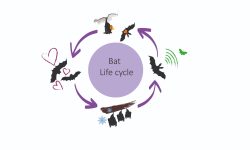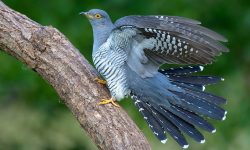Birds are often admired for their beauty, grace, and song—but not all feathered creatures are peaceful. Some are fierce hunters, others aggressively territorial, and a few can even pose a serious threat to humans. From razor-sharp talons to bone-crushing kicks, these birds have evolved to survive—and dominate. Here are 15 of the most dangerous birds in the world, and the incredible adaptations that make them so formidable.
1. Cassowary (Southern Cassowary – Casuarius casuarius)
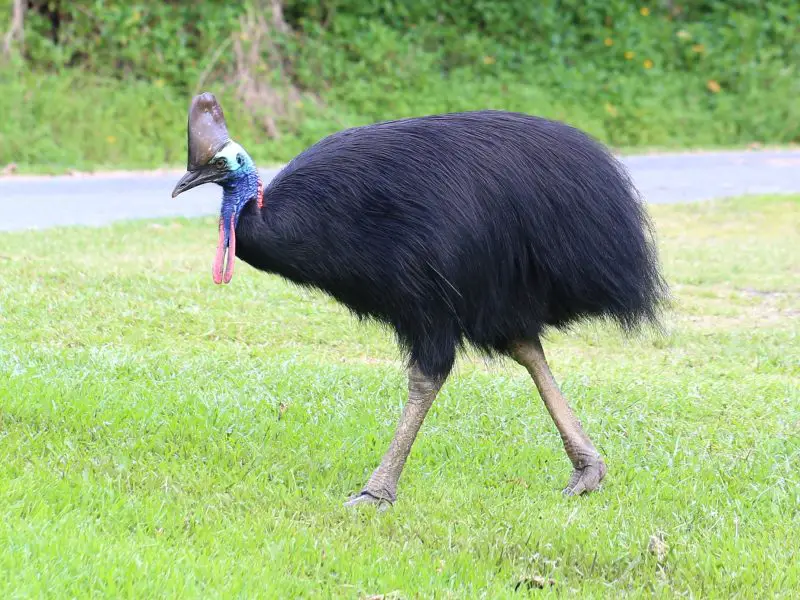
A Prehistoric Predator in Feathers
Standing over 6 feet tall and cloaked in midnight-black feathers, the cassowary looks like a creature time forgot—and it acts like it, too. Native to the dense rainforests of northern Australia and New Guinea, this bird is often hailed as the most dangerous on the planet, and for good reason.
Topping the scales at over 130 pounds, the cassowary doesn’t fly—it charges. Its muscular legs can launch it at terrifying speeds, and each foot is armed with a razor-sharp claw nearly 4 inches long, curved like a raptor’s talon. One precise kick can disembowel a dog, shatter a human femur, or worse.
Cassowaries are notoriously territorial and unpredictable. If cornered, threatened, or provoked—especially during breeding season—they transform from shy forest dwellers into explosive attackers. Several human injuries and even fatalities have been recorded over the years, earning this bird a fearsome reputation.
With its bright blue neck, helmet-like casque, and ancient lineage, the cassowary doesn’t just resemble a dinosaur—it carries the ferocity of one into the modern world.
2. Ostrich (Struthio camelus)
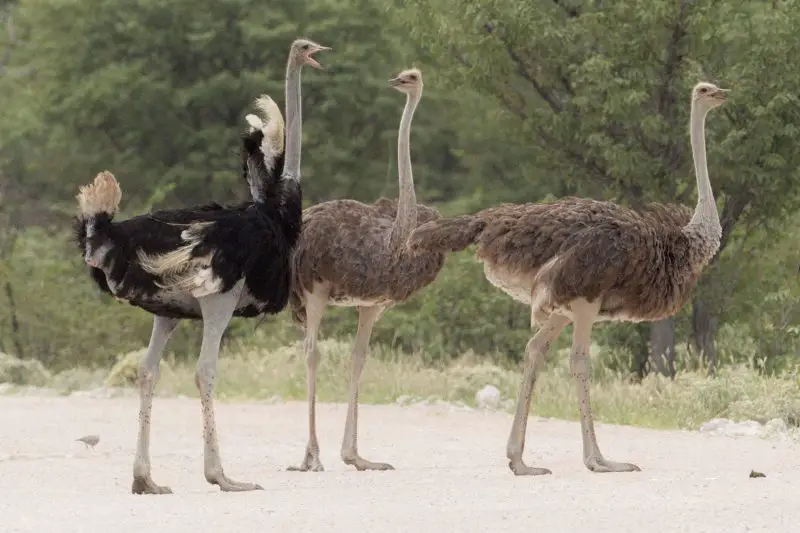
The Titan of the Bird World with a Lethal Kick
Towering at up to 9 feet tall and weighing over 300 pounds, the ostrich is a flightless giant—but don’t mistake that for weakness. What it lacks in aerial grace, it more than makes up for in sheer power and speed. Capable of sprinting at over 40 miles per hour, it’s one of the fastest creatures on two legs.
But its most formidable weapon isn’t its speed—it’s the devastating kick. Each of its long, muscular legs ends in two-toed feet, equipped with a dagger-like claw that can reach nearly 4 inches in length. When threatened—especially during nesting season—an ostrich can launch a bone-crushing strike with terrifying accuracy.
These kicks aren’t just for show. They’ve been known to kill lions, hyenas, and even humans when delivered with full force. A single well-placed blow can rupture organs or break bones.
In the wild, an ostrich doesn’t bluff—it attacks with the confidence of a creature that knows it can win. This bird may not soar through the skies, but it rules the savannah with raw physical might.
3. Harpy Eagle (Harpia harpyja)
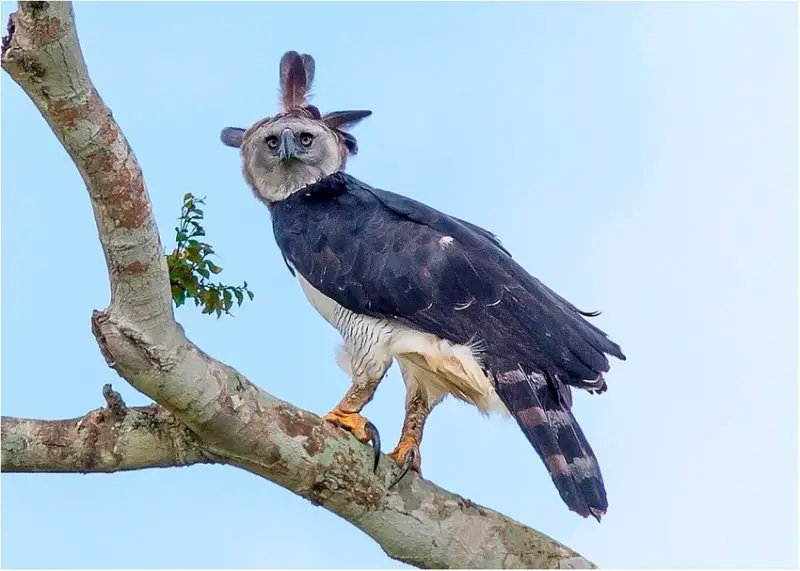
The Silent Storm of the Jungle Canopy
With a wingspan stretching up to 7 feet and a piercing gaze that locks onto prey from hundreds of feet away, the harpy eagle reigns as the undisputed apex predator of the tropical rainforests of Central and South America. It’s not just one of the largest eagles in the world—it’s one of the most fearsome.
This magnificent raptor is built like a powerhouse. Its thick legs rival the size of a child’s arm, and each foot ends in five-inch talons—longer and sharper than a grizzly bear’s claws. When it strikes, it does so with bone-snapping force, easily lifting prey as heavy as monkeys, sloths, and even medium-sized birds straight from the treetops.
Despite its bulk, the harpy eagle moves with ghost-like silence through the canopy. Its stealth and power allow it to ambush prey with surgical precision, making it a nightmare in the jungle for anything below it on the food chain.
Elusive and rare, spotting a harpy eagle in the wild is a dream for many birders—but to the forest’s wildlife, this eagle is more than a symbol of majesty. It’s the embodiment of lethal dominance, gliding through the trees like a spirit of the hunt.
4. Philippine Eagle (Pithecophaga jefferyi)
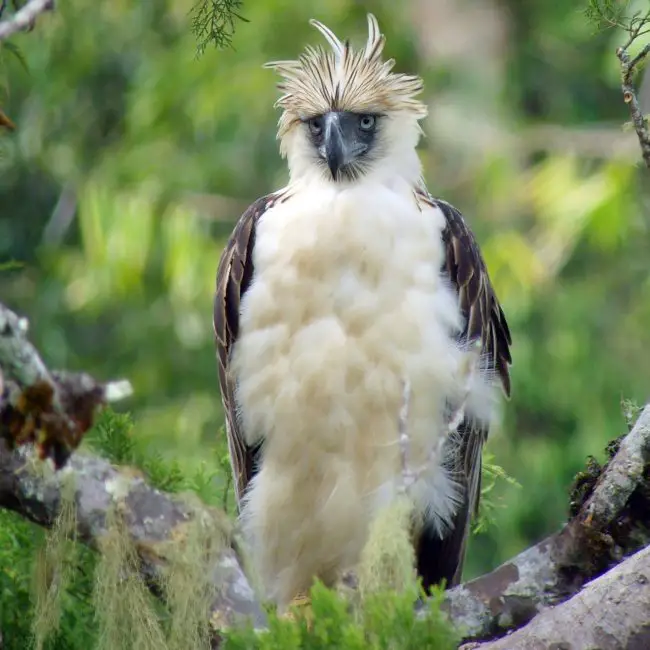
The Monkey Slayer of the Sky
Soaring through the dense mountain forests of the Philippines is a bird so powerful, so elusive, and so revered that it has been named the “Monkey-eating Eagle.” The Philippine Eagle, one of the largest and rarest raptors on Earth, combines raw power, lightning speed, and haunting precision to dominate its treetop realm.
With a wingspan stretching over 7 feet and a shaggy crown of feathers framing its fierce amber eyes, this eagle is majestic—and menacing. Its massive, hooked beak can tear through flesh with ease, and its enormous talons are capable of crushing bones in a single clutch. When it dives from the canopy, it does so with such explosive force that its prey—monkeys, flying lemurs, large birds—rarely has time to react.
Despite its deadly abilities, the Philippine Eagle teeters on the edge of extinction. Fewer than 500 individuals remain in the wild, threatened by habitat loss and hunting. Yet in its element, it remains untouchable—a ghost of the rainforest, feared by its prey and respected by all who’ve seen it in action.
Critically endangered and critically dangerous, the Philippine Eagle is not just a national treasure—it’s a living symbol of the raw, untamed power of nature.
5. Great Horned Owl (Bubo virginianus)
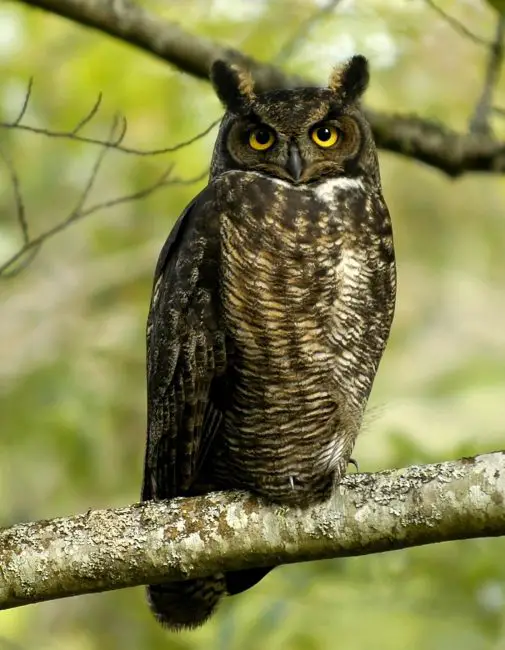
Death Comes Without a Sound
With piercing yellow eyes, feathered “horns,” and a haunting hoot that echoes through North America’s forests, the Great Horned Owl is the embodiment of nocturnal menace. But it’s not the owl’s look or voice that makes it truly dangerous—it’s the way it kills: swift, silent, and savage.
This apex nighttime predator is a master of stealth. Its wings are specially adapted to muffle the sound of flight, allowing it to glide through the night with ghost-like silence. By the time prey senses its presence, it’s already too late. With bone-crushing talons capable of exerting over 300 pounds of pressure, it dispatches rabbits, skunks, opossums, snakes, other birds—and even domestic cats and small dogs—without hesitation.
Highly territorial, the Great Horned Owl is known to defend its nest with fury. Hikers and researchers have reported being dive-bombed or clawed when unknowingly straying too close during breeding season. Its aggression is matched only by its efficiency as a hunter.
Graceful yet lethal, this owl doesn’t just survive in the dark—it rules it.
6. African Crowned Eagle (Stephanoaetus coronatus)
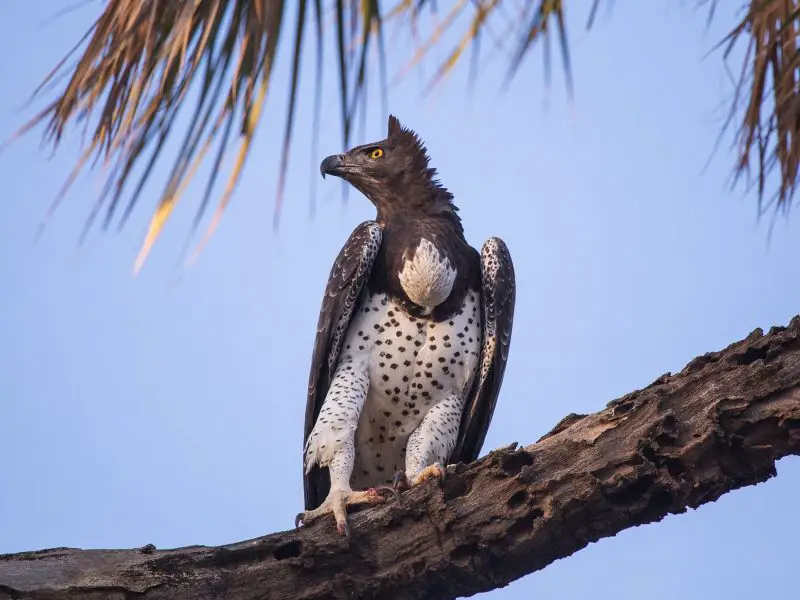
The “Leopard of the Sky”
In the shadowy depths of sub-Saharan Africa’s forests, one raptor reigns with a predatory ferocity so intense that even primates fear the sky. The African Crowned Eagle is not only the most powerful eagle in Africa, but one of the few birds on Earth capable of taking down prey larger than itself—earning it the chilling nickname, “Leopard of the Sky.”
With a stocky build and wings adapted for maneuvering through dense canopy, this eagle hunts monkeys, small antelope, hyraxes, and large birds with surgical precision. Its feet are equipped with dagger-like talons, and each crushing strike can exert an estimated 400 to 750 pounds of pressure per square inch—enough to shatter bones and instantly kill its quarry.
Even more shocking are confirmed reports of attacks on human children, with remains found in eagle nests. While rare, these incidents underscore just how formidable this bird truly is. Stealthy, explosive, and highly aggressive, the crowned eagle is a deadly force from above—a predator that lives up to its fearsome reputation.
7. Lammergeier (Bearded Vulture – Gypaetus barbatus)
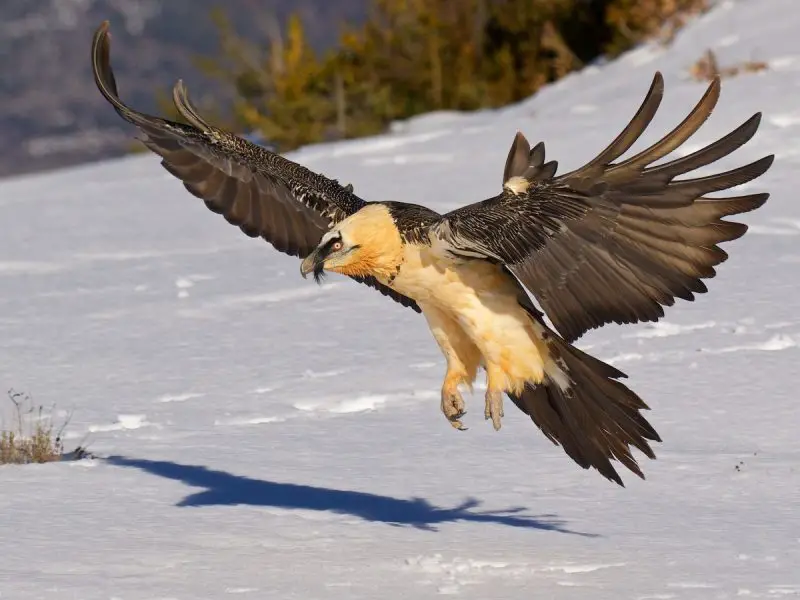
Death from Above—By Dropped Bones
High in the rugged mountains of Europe, Asia, and Africa soars one of nature’s most unorthodox predators: the Lammergeier, or Bearded Vulture. With its flaming-red eyes, black “beard,” and wings spanning nearly 10 feet, it looks like a creature from myth—but its hunting method is real, and it’s as brutal as it is brilliant.
Unlike most vultures, the Lammergeier doesn’t scavenge meat—it seeks out bones. After picking them clean, it flies high into the air, carrying large bones in its talons, and drops them onto rocks from hundreds of feet up. The goal: to shatter the bones open and feast on the nutrient-rich marrow inside.
This aerial demolition strategy, while effective, can be dangerous. There are legends—and some evidence—of bones dropped by Lammergeiers causing injury or death to animals and even humans below. In fact, one tale tells of a Greek playwright, Aeschylus, reportedly killed by a falling tortoise dropped by a Lammergeier mistaking his bald head for a rock.
Part scavenger, part surgeon, part sky-smasher, the Lammergeier is one of the strangest and most spectacular threats in the avian world.
8. Mute Swan (Cygnus olor)

Beauty with a Brutal Side
Gliding across a pond with an arched neck and pristine white plumage, the Mute Swan seems the picture of elegance. But beneath that serene exterior lies one of the most aggressive birds found near water. Especially during breeding season, mute swans transform from graceful gliders into furious defenders of territory and family.
Armed with powerful wings capable of breaking a human arm, they will chase dogs, hiss at joggers, and have even capsized small kayaks and canoes. Their sheer strength, combined with surprising speed and fearlessness, makes them a real threat to anyone who gets too close. Some accidental drownings have been linked to aggressive swan attacks in deep water.
Mute swans don’t just defend—they dominate. Their territorial instincts and muscular bodies make them beautiful, but brutally bold creatures.
9. Northern Goshawk (Accipiter gentilis)
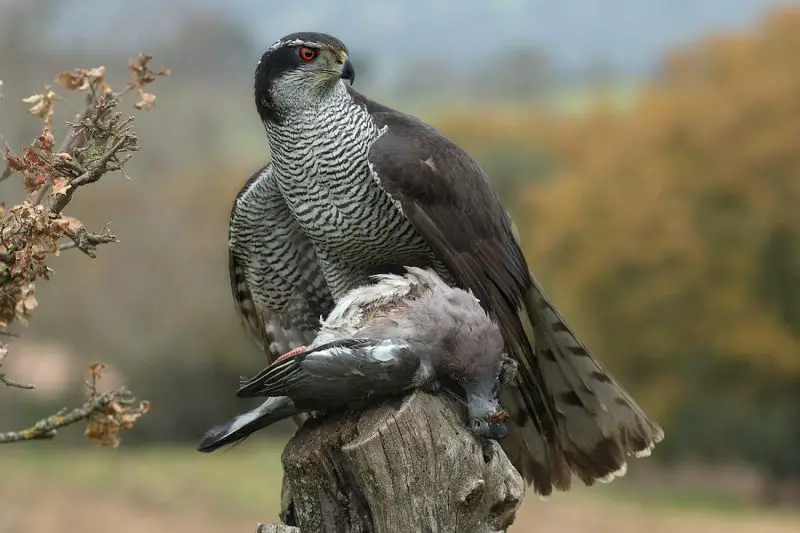
The Fearless Forest Guardian
Sleek, swift, and fiercely territorial, the Northern Goshawk is a bird of prey that even seasoned falconers approach with caution. Found across boreal forests in the Northern Hemisphere, this raptor is famous for one thing: unrelenting aggression when defending its nest.
During the breeding season, the goshawk will dive-bomb hikers, pets, and even humans who stray too close to its nesting area. These attacks aren’t half-hearted displays—they’re precision strikes with razor-sharp talons, lightning speed, and a fury that rarely backs down.
Feared for its combination of stealth, strength, and tenacity, the goshawk commands respect. In the woods it calls home, it is not the intruder who sets the rules—it’s the goshawk.
10. Snowy Owl (Bubo scandiacus)
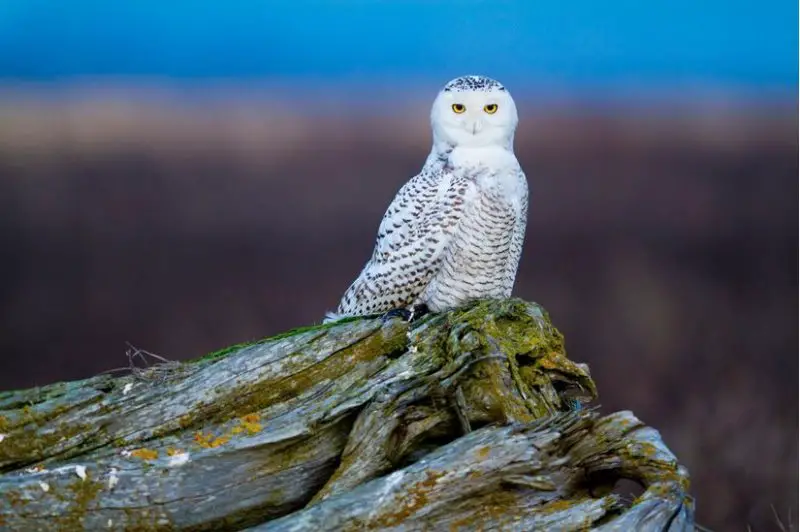
The Arctic Assassin
Blanketed in dazzling white feathers and standing guard over frozen tundras, the Snowy Owl is as beautiful as it is deadly. One of the largest owl species in the world, it is built for the harsh extremes of the Arctic—and for killing with ruthless efficiency.
Its weaponry includes piercing talons, crushing grip strength, and a hooked beak sharp enough to tear through thick fur. While its main prey includes lemmings and ptarmigans, Snowy Owls have been documented taking down Arctic foxes and defending nests from humans and sled dogs with fearless attacks.
During nesting season, they will launch surprise assaults from above, aiming for the head and eyes. With near-silent flight and ghostly speed, the Snowy Owl doesn’t just hunt—it haunts the tundra.
11. Australian Magpie (Gymnorhina tibicen)
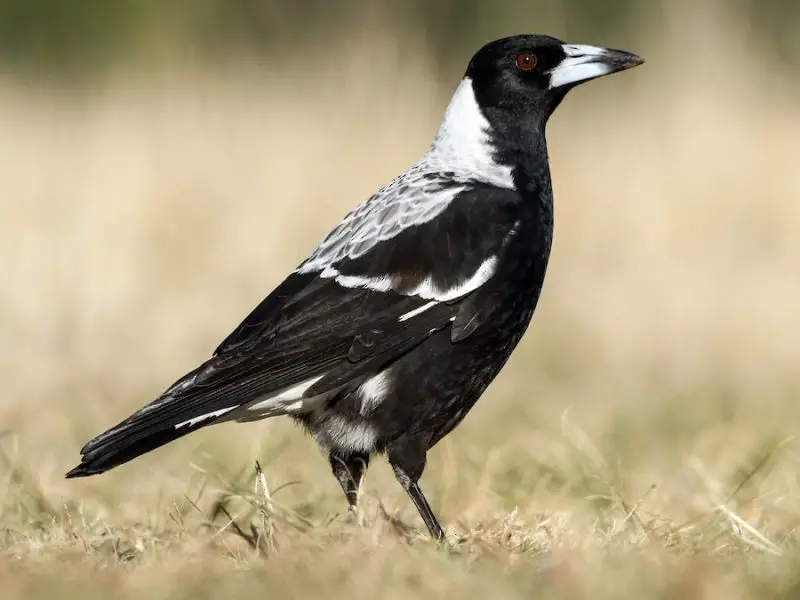
A Dive-Bombing Menace Down Under
In most seasons, the Australian Magpie is a clever, melodious fixture of suburban parks and open woodlands. But when “swooping season” begins—usually between August and October—this unassuming bird becomes a skyborne terror.
Fiercely protective of their nests, magpies will dive-bomb unsuspecting pedestrians, cyclists, runners, and even children, often aiming directly for the face. With razor-sharp beaks and pinpoint accuracy, they can cause eye injuries, bloody cuts, and even bike crashes as people try to flee in panic.
Locals have resorted to wearing helmets with zip ties, painted eyes, or umbrellas just to get through magpie-infested areas. In the Australian suburbs, it’s not the predators you need to fear—it’s the feathered fury above.
12. Barred Owl (Strix varia)
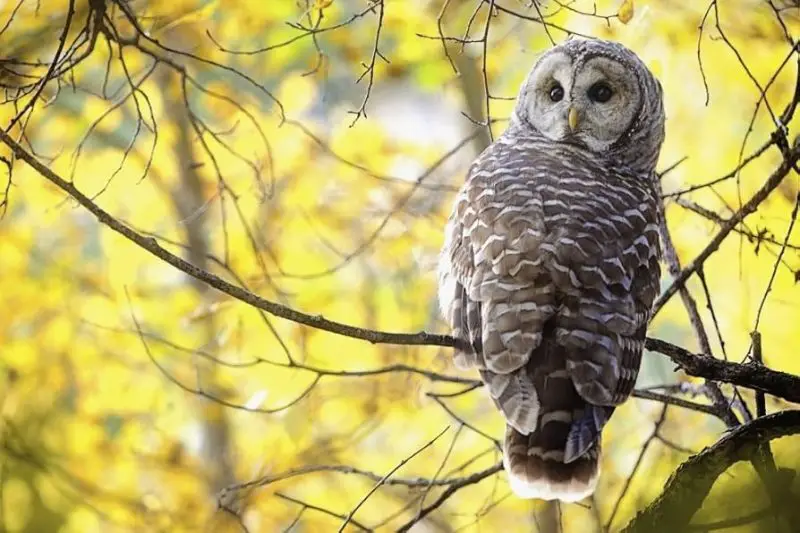
The Silent Striker of the Forest
With its haunting “Who cooks for you?” call and soft, rounded face, the Barred Owl may appear harmless—but make no mistake, this bird can become a stealthy attacker when provoked.
Found across North American woodlands, the barred owl is known to launch surprise assaults on joggers and hikers who venture too close to its nest. Its flight is virtually silent, allowing it to strike without warning, often targeting the head and neck. Victims have reported cuts, concussions, and terror, especially during breeding season when the owls become hyper-vigilant parents.
Though not a typical threat, when this owl decides to defend, it does so with the element of shock—and claws.
13. Red-winged Blackbird (Agelaius phoeniceus)
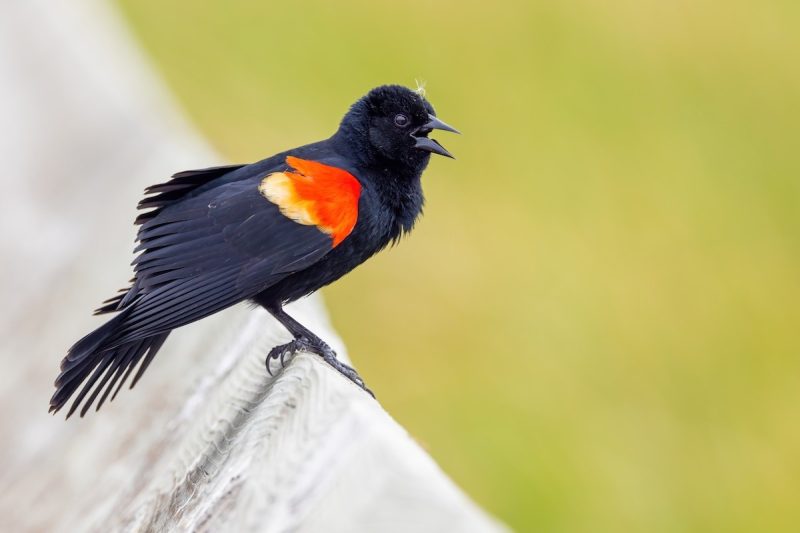
Small but Relentless
Don’t let its vibrant red and yellow shoulder patches or melodious song fool you—the Red-winged Blackbird is one of the most aggressively territorial birds in North America.
During spring and early summer, these birds become aerial assailants, launching repeated strikes at any human or animal that dares approach their nesting territory. What makes them so startling is their tactic: swooping silently from behind, they peck, claw, and harass intruders—often without warning and with astonishing persistence.
Joggers, dog-walkers, and even farmers find themselves under siege, enduring dozens of attacks in a single outing. Though small, the red-winged blackbird’s boldness and intensity earn it a rightful spot among the world’s most unexpectedly dangerous birds.
14. European Herring Gull (Larus argentatus)

The Urban Terror of the Skies
With a piercing scream and wingspan over 5 feet, the European Herring Gull is not your average beach bird—it’s a brazen urban menace. Found along coastlines and increasingly in cities across Europe, this gull has earned infamy for its boldness, aggression, and sheer lack of fear when it comes to humans.
Armed with sharp beaks and startling cunning, herring gulls will swoop down and snatch food straight out of people’s hands, rip open trash bags, and peck at unsuspecting passersby, including children. Their aggression escalates during nesting season, when they form squawking mobs to protect chicks, launching group attacks against anyone who comes too close.
Don’t let their seaside elegance fool you—when these gulls set their sights on something, they don’t back down. In many cities, they’ve become feathered outlaws, ruling rooftops and plazas with sharp claws and sharper attitudes.
15. Brown Snake Eagle (Circaetus cinereus)
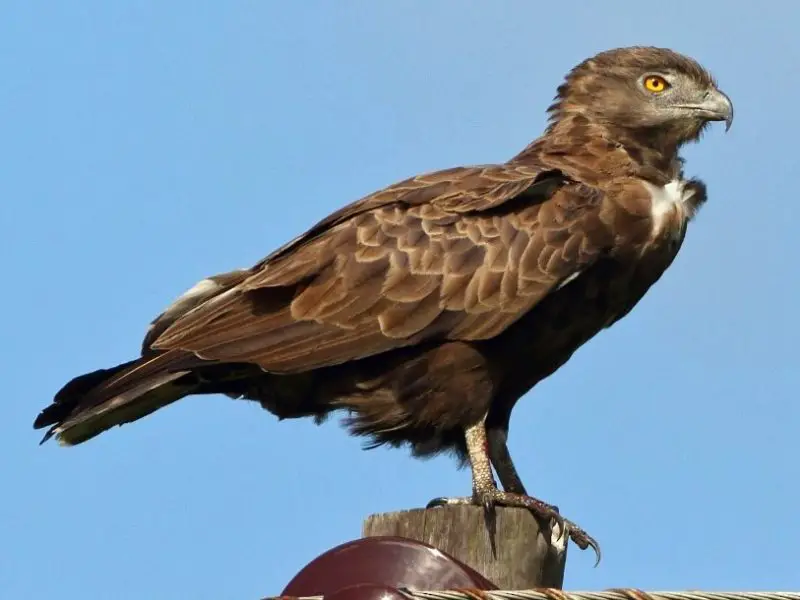
Venom-Proof and Fearless
Soaring over the sun-scorched savannas of sub-Saharan Africa is a bird that hunts what most animals fear—venomous snakes. The Brown Snake Eagle is a specialized predator with a taste for danger, regularly preying on cobras, puff adders, and even black mambas.
Its secret weapons? Thick, scaly legs that resist fangs, unflinching vision, and lightning-fast strikes. With its powerful talons, it grabs and crushes snakes mid-strike, often swallowing them whole. Unlike most raptors, it lacks strong hunting claws for gripping mammalian prey—it doesn’t need them. It has evolved almost exclusively to take down snakes.
While rarely threatening to humans, the Brown Snake Eagle’s sheer nerve and evolutionary specialization make it one of the most fearless and lethal avian hunters alive. Where others flee, this eagle dives toward the danger—a true master of venom and violence.
Conclusion
While most birds pose little threat to humans, these 15 species remind us that not all feathered creatures are gentle songbirds. Whether defending a nest, hunting prey, or protecting territory, each of these birds wields impressive adaptations—from deadly talons to crushing kicks. As beautiful as they are, they command respect in the wild—and even in our backyards.





